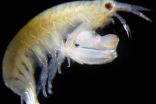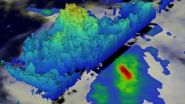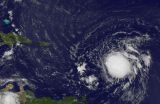(Press-News.org) New Haven, Conn. -- Nearly one in four patients with chronic hepatitis C (HCV) are denied initial approval for a drug therapy that treats the most common strain of the infection, according to a Yale School of Medicine study.
The finding, published Aug. 27 in PLOS ONE, identifies a new barrier to caring for patients with this severe condition.
Prior to the FDA approval of novel antiviral therapies for HCV in 2014, treatment options for patients were limited, requiring weekly injections of interferon-based therapy that caused severe side effects. The new regimens revolutionized treatment and offered patients an oral therapy with cure rates exceeding 90%. However, the high cost of care led insurers to impose new restrictions on drug authorization.
In light of the new restrictions, the study authors hypothesized that while most patients would be able to access antiviral therapy, some would experience delays in approval and others would be denied. Led by Joseph K. Lim, M.D., associate professor of medicine and director of the Yale Viral Hepatitis Program, the investigators reviewed records of 129 patients who were prescribed a combination of two drugs (sofosbuvir and ledipasvir, or SOF/LED) between October and December 2014.
"The first key finding is that upon initial request for treatment, approximately one in four patients are denied," said Albert Do, M.D., internal medicine resident and co-first author with Yash Mittal, M.D. "That proportion is surprising."
The researchers also found that certain subsets of patients were more likely to receive initial approval, including those with advanced liver disease such as cirrhosis and those on public insurance, either Medicare or Medicaid. "It is significant that factors beyond disease state and medical necessity now affect one's likelihood of accessing HCV treatment," said Mittal.
While most patients in the study eventually received approval for treatment through the insurance appeals process, the delays are concerning, said Lim, as time is critical for patients on the verge of developing cirrhosis or liver failure. "It could make the difference for those who can be treated and remain stable long-term, versus those who have gone past the point of no return and will require liver transplantation or succumb to their illness," he noted.
This study adds to a growing body of literature on the hepatitis C "cascade of care," in which attrition occurs at every step from diagnosis, confirmation, linkage to care, and treatment, Lim explained. He hopes the study triggers further research and discussion about this new barrier to HCV care.
"Delay in access may further challenge our ability to cure hepatitis C in this country," Lim said. "Some patients are told they must wait until they have advanced liver disease before they can undergo potentially curative treatment. We hope these data may help inform national policy discussions on promoting more rational, patient-centered approaches to HCV treatment access."
INFORMATION:
Other Yale authors include Annmarie Liapakis, Elizabeth Cohen, Hong Chau, Claudia Bertuccio, Dana Sapir, Jessica Wright, Carol Eggers, Kristine Drozd, Maria Ciarleglio, and Yanhong Deng.
Citation: PLOS ONE.
http://dx.plos.org/10.1371/journal.pone.0135645
Contact: Ziba Kashef 203-436-9317 or ziba.kashef@yale.edu
For astronauts living in space with objects zooming around them at 22,000 miles per hour like rogue super-bullets, it's good to have a backup plan. Although shields and fancy maneuvers could help protect space structures, scientists have to prepare for the possibility that debris could pierce a vessel. In the journal ACS Macro Letters, one team reports on a new material that heals itself within seconds and could prevent structural penetration from being catastrophic.
It's hard to imagine a place more inhospitable to life than space. Yet humans have managed to travel ...
The Global Precipitation Measurement or GPM mission core satellite measured rainfall as Tropical Depression Twelve was upgraded to Tropical Storm Ignacio.
Tropical Depression 12E strengthened into Tropical Storm Ignacio at 5 p.m. EDT yesterday, August 25. At that time, it became the ninth named tropical storm of the Eastern Pacific hurricane season.
The GPM core observatory satellite saw Ignacio on August 25, 2015 at 2256 UTC. GPM's Dual-Frequency Precipitation Radar (DPR) found rain falling at a rate of over 74 mm (2.9 inches) per hour with storm tops reaching to altitudes ...
Treatments for cystic fibrosis (CF) have added years to the lives of thousands of Americans. But they can be difficult to administer, and most don't fix the underlying cause. Scientists have now found that a small molecule, when tested in yeast, can substitute for a protein and restore a key cellular function related to those missing in people with CF and similar conditions. Their report appears in the Journal of the American Chemical Society.
CF is caused by a genetic mutation that affects certain cellular proteins that make up "channels," which act like gates managing ...
Nobody likes flight delays, but they are a common occurrence: In 2011, about 20 percent of U.S. flights were at least 15 minutes behind schedule. Those delays irritate passengers and, in 2010, added an estimated $6.5 billion to U.S. airlines' operating costs.
Delays tend to hit some airlines harder than others, due to the approach the Federal Aviation Administration (FAA) uses to resolve them. This approach places an emphasis on minimizing aggregate system delays, nationwide -- a policy that affects some airlines much more than others at a given time.
But now a study ...
While exploring the remote coral reefs of Raja Ampat in Indonesia, Dr. James Thomas from the Halmos College of Natural Sciences and Oceanography, Florida, and his colleagues from Naturalis Natural History museum in the Netherlands, stumbled across a small but extraordinary crustacean living inside another reef invertebrate in a commensal association (without causing any harm, nor benefit to its host).
In his amazement to the amphipod's unusual form, Dr. Tomas called it L. eltoni after musician and actor Sir Elton John. The research is available in the open access journal ...
Female mice exposed in utero, or in the womb, to low levels of arsenic through drinking water displayed signs of early puberty and became obese as adults, according to scientists from the National Institutes of Health. The finding is significant because the exposure level of 10 parts per billion used in the study is the current U.S. Environmental Protection Agency standard, or maximum allowable amount, for arsenic in drinking water. The study, which appeared online August 21 in the journal Environmental Health Perspectives, serves as a good starting point for examining ...
The Global Precipitation Measurement or GPM mission core satellite can measure rainfall from space, and saw heavy rainfall in the Central Pacific's Loke when it was a hurricane.
Hurricane Loke formed southwest of the Hawaiian Islands on August 21, 2015 but Loke has not been a threat to Hawaii because it intensified to hurricane strength while moving well west of Hawaii over the open waters of the Pacific Ocean.
The GPM core observatory satellite measured precipitation within the hurricane as it flew above the most powerful thunderstorms in the hurricane on August 25, ...
"If I offered you a bruised banana, you probably wouldn't be interested," said Jonathan Deutsch, PhD, director of Drexel University's Center for Hospitality and Sport Management. "But what if I offered you some banana ice cream on a hot summer day? I bet you'd find that a lot more appealing."
It was this simple observation that inspired a new model for recovering would-be wasted - or surplus - food and repurposing it to feed hungry people, generate revenue and even create jobs. The model was recently piloted in West Philadelphia, home to a large population of low-income ...
Summertime is waning, and that means the end of backyard barbecues is almost upon us. That also means an end to dousing charcoal briquettes with lighter fluid. Reducing the use of lighter fluid might not be a bad thing, as many of those products are made from crude oil and emit potentially harmful compounds when lit. Now, researchers report in ACS Sustainable Chemistry & Engineering that they developed a waste-paper-based, environmentally friendly and sustainable alternative.
Igniting fires has been a keystone to human civilization. Ancient communities used plant and ...
As Tropical Storm Ericka continued moving toward the Lesser Antilles, NASA's Aqua and other satellites were gathering data. Satellite imagery showed strong thunderstorms wrapped around Erika's center.
Infrared data, such as that gathered by the Atmospheric Infrared Sounder (AIRS) instrument that flies aboard NASA's Aqua satellite is used to determine cloud top temperature. The colder the cloud tops, the higher they are in the atmosphere, and they are usually stronger. Cloud tops around Erika's center were near -63F/-53C, indicating strong thunderstorms.
A Tropical Storm ...





